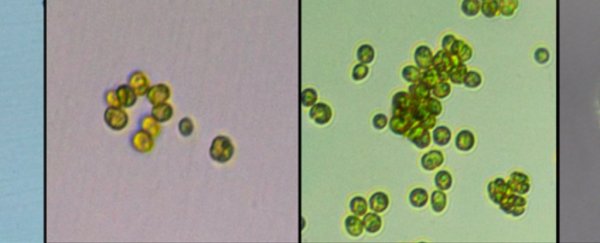Most of us know that at some point in our evolutionary history around 600 million years ago, single-celled organisms evolved into more complex multicellular life.
But knowing that happened and actually seeing it happen in real-time in front of you is an entirely different matter altogether.
And that's exactly what researchers from the Georgia Institute of Technology and University of Montana have witnessed - and captured in the breathtaking, time-lapse footage below.
The evolution took just 50 weeks, and was triggered by the introduction of a simple predator.
The team captured nine, 14-second time-lapse videos of the transition, which you can view in this playlist:
In this incredible experiment, the team was trying to figure out exactly what drove single-celled organisms to become multicellular all those years ago.
One hypothesis is that it was predation that put selective pressure on single-celled organisms, causing them to become more complex.
So to test the validity of this in the lab, the team led by evolutionary biologist William Ratcliff, took populations of single-celled green alga Chlamydomonas reinhardtii.
They then put a single-celled filter-feeding predator in the mix, Paramecium tetraurelia and watched what happened.
Incredibly, the researchers watched as in just 50 weeks - less than the span of a year - two out of five experimental populations of the single-celled creatures evolved into multicellular life.
"Here we show that de novo origins of simple multicellularity can evolve in response to predation," the team write in their paper.
Fifty weeks is a relative blink of an eye on the evolutionary scale. For the algae it was a little longer - 750 generations. But that's still quite impressive when you think that they evolved entirely new life cycles.
Being able to witness something like this is not only absolutely mind-blowing, but it also suggests that predation could have played some kind of role in at least part of the evolution of multicellularity.
Not only that, but the resulting multicellular organisms were all incredibly varied. Just like you'd expect in natural evolution.
"Considerable variation exists in the evolved multicellular life cycles, with both cell number and propagule size varying among isolates," the team write in their paper.
"Survival assays show that evolved multicellular traits provide effective protection against predation."
The research has been published in Scientific Reports and the full paper is freely available.
